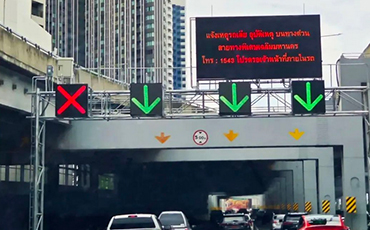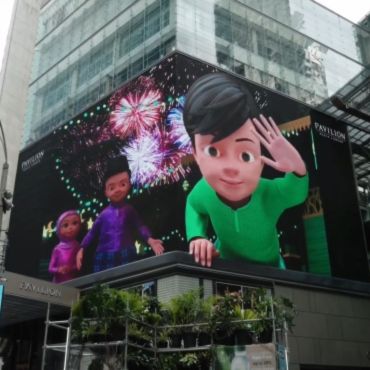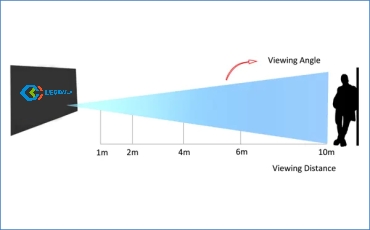With the progress of society, various styles of LED display appear in every scene of our life.
However, when the LED display in a variety of harsh environmental conditions, its reliability and safety has become the focus of discussion, IPXX protection level is particularly important.
What is IP?
Ingress Protection, often referred to by its acronym IP, is a standardized system.
The Ingress Protection (IP) rating is an internationally recognized standard that measures the performance of an electronic product enclosure in protecting electronic equipment, devices or components from solids and liquids.
When choosing an LED display, IP rating is a factor we must consider, especially for outdoor LED display projects.
The numbers in the IP code cover different aspects of protection: the first number represents the level of protection against solid particles and the second number the level of protection against liquids.

Dust protection class (indicated by the first X)
IP0X:Unprotected.
IP1X: Protects against solid objects larger than 50 mm.
IP2X: Protects against solid objects larger than 12 mm from entering.
IP3X: Protects against solid objects larger than 2.5 mm.
IP4X: Protects against solid objects larger than 1 mm.
IP5X: Protects against harmful dust accumulation.
IP6X: Fully dust-proof.
 Dust protection class (indicated by the second X)
Dust protection class (indicated by the second X)
IPX0: No protection.
IPX1: Protected against vertical water fall, preventing water droplets from falling into the product when it is used indoors.
IPX2: Protected against tilted water, prevents continuous water penetration when the product is tilted at a maximum of 15°.
IPX3: Protected against water jets, e.g. rainwater, when the product is tilted at a maximum of 60°.
IPX4: Protected against splashing water, able to withstand water jets from all directions, simulating a rain splash situation.
IPX5: Protected against low-pressure jets of water with an inner diameter of 6.3mm from the nozzle.
IPX6: Protected against strong water jets, capable of withstanding strong water jets of 12.5mm internal diameter from the nozzle.
IPX7: Protected against temporary immersion, able to withstand submergence under water for a specified period of time and under pressure.
IPX8: Protected against continuous immersion, the equipment can be continuously submerged underwater and maintain normal operation.

The first digit indicates the level of protection of the equipment against dust and intrusion of foreign objects, with a maximum level of 6.
The second digit indicates the degree of airtightness of the equipment against moisture and water intrusion, with a maximum level of 8.

The larger the characteristic number, the higher the level of protection. When the level of protection is not required, the characteristic number can be replaced by the letter “X” or the number “0”.
Common IP parameters when purchasing LED displays
The differences and advantages of our common IP40, IP45, IP65 and IP66 standards are listed below:
IP40 LED Display:
– Dust resistance: Protection against particles with a diameter of 1mm or more.
– Waterproof ability: no protection.
– Advantage: dust-proof effect is better, mostly for indoor LED display.

IP45 LED Display:
– Dust resistance: Protection against particles with a diameter of 1mm or more.
– Waterproof ability: protection against low-pressure water jet.
– Advantage: dust-proof effect is better, mostly for semi-indoor LED display.
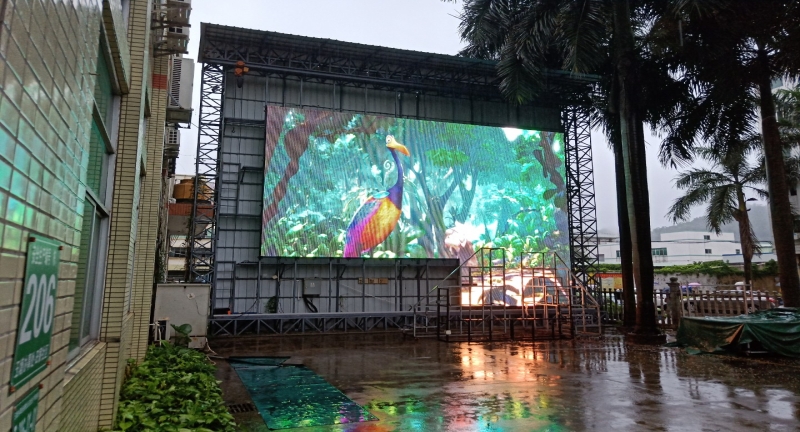
IP65 LED Display:
– Dust resistance: Fully dust-proof, no particles entering.
– Water resistance: protection against low-pressure water jets.
– Advantage: absolutely dust-proof, can also withstand strong water jets, wide range of use.

IP66 LED Display:
– Dust resistance is the same as IP65 with better water resistance.
– Advantage: Stricter than IP65 level, higher water flow pressure and time requirements.
When choosing a rating, consider the coverage
required for the area, the installation method, and any appropriate codes or guidelines.
By choosing the ideal IP rating, you can be sure that your led screen will provide proper protection and long-lasting durability for years to come.
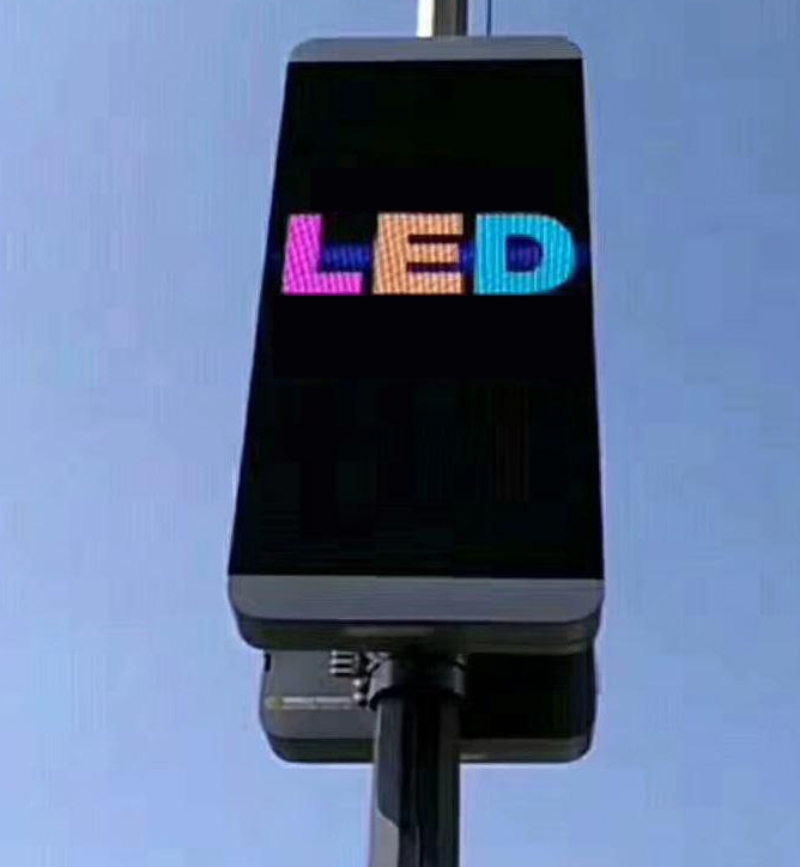
How to choose the right IP rating for LED displays?
Careful assessment of the intended application of the LED display is essential when determining the appropriate IP rating.
Depending on the surrounding environment, different levels of defence against solid objects and liquids may be required.
Indoor LED Display
Indoor LED screens often require a lower level of protection than outdoor led displays. To help you out, here is a guide to some of the IP ratings for indoor LED screens:
IP20: This is ideal for indoor environments with limited dust and moisture possibilities, such as homes and offices.
IP40: Ideal for indoor use in areas prone to moderate dust and humidity.

Semi-Outdoor LED Display
Semi-outdoor LED screens fall between the level of protection required for indoor and outdoor LED displays.
IP44: Ideal for use in outdoor areas that will not be directly exposed to rain or adverse weather conditions, such as porches or covered patios.
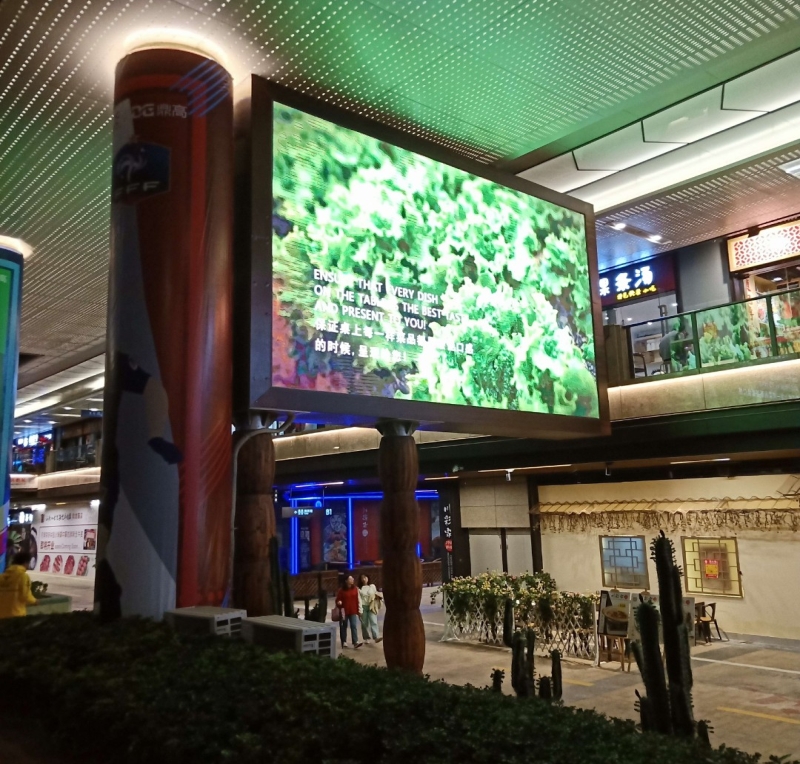
Outdoor LED Display
When selecting outdoor LED screens, it is important to consider their protection against dust, water and other environmental factors.
The IP (Ingress Protection) rating system guides the recommended level of protection required in such scenarios. For example, here are some suggested IP ratings for outdoor display:
IP65:Ideal for open areas with precipitation or inclement weather.
IP67 or better: Fixtures with an IP67 rating or better can be safely used in outdoor areas that may be in the vicinity of a pool for extended periods of time, such as swimming pools and fountains.
Conclusion
When choosing an LED display, it is necessary to consider both the cost and the amount of protection required, as the higher the IP rating, the better the protection, but usually at a higher price.
When determining the correct IP rating for your LED display, it is also important to consider the type of installation.
For example, if the LED screen is in a difficult to access location, such as an outdoor advertising LED display with a high column mount height, it may be worth investing in a higher IP rating to minimise maintenance and replacement.
Author : Lucy Huang
FAQ:
- What IP rating is required for outdoor LED screens?
As a standard rule, when purchasing an outdoor LED screen, choose a product with an IP rating of IP45 or higher. IP65 provides the highest level of external protection.
- Which IP ratings are waterproof for LED displays?
IP65, 66 and 67 are considered waterproof ratings. The term ‘waterproof’ only applies to specific conditions.
- Is IP65 or IP44 better?
Generally speaking, the higher the IP rating, the better the protection, so IP65 rating is better than IP44.IP65 LED display can resist dust, moisture and water.
- Is IP65 LED display suitable for use in heavy rain?
IP65 rated LED displays can usually withstand large amounts of falling or spraying water in the environment, but cannot be physically immersed in water.
- Can IP44 LED displays be used in the rain?
If an LED display is IP44 rated, this means that it can withstand most solid objects and can easily withstand splashing water or light rain.



